 |
|
|
| Date |
Information |
|
| 02/04/2024 |
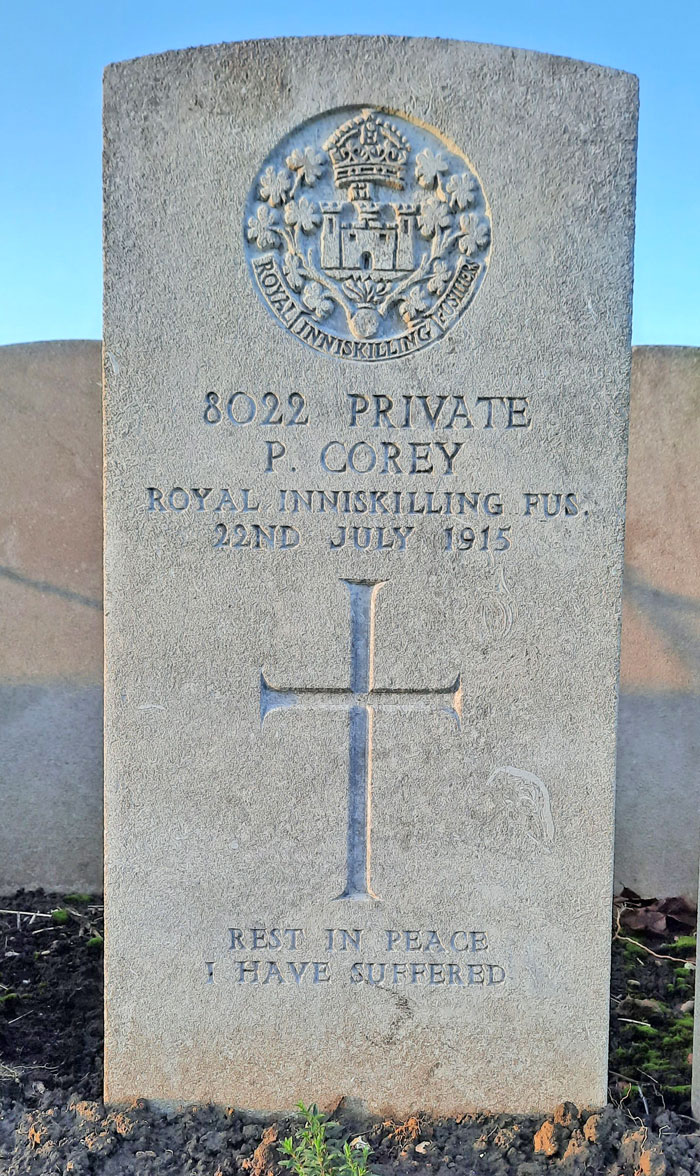 |
| 01/05/2020 |
02071 |
| 03/12/2018 |
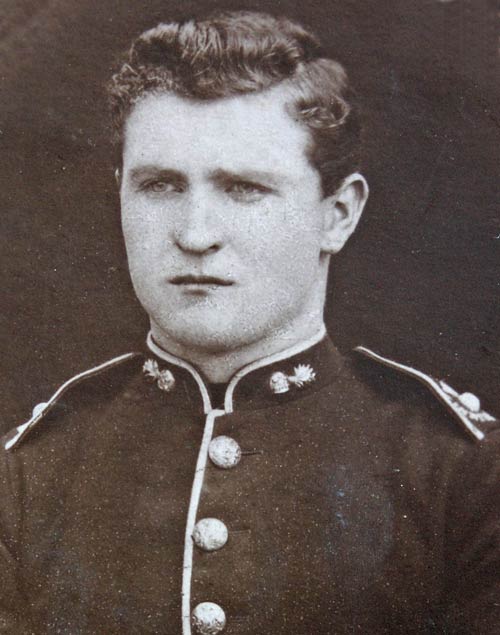 |
| 03/12/2018 |
Mrs Mary Corey, Blackhill, Cookstown, has received official intimation that her husband, Private Patrick Corey, Second Inniskillings, was killed in action on 22nd July. Private Corey was a reservist, and was called up at the beginning of the war. He went out with the First Expeditionary Force, and was present at the Battle of Mons. He was seriously wounded in October, and after a long term in hospital, was home on leave in January. On returning to the colours he was stationed in Londonderry and went out with a draft in May last. He was well-known and very popular in Cookstown, being a footballer of considerable ability, playing both the Association and Gaelic games. Much sympathy is felt for his young widow, who has received many letters of condolence, even from people with whom she had no personal acquaintance. She especially values the following:- ‘The King commands me to assure you of the true sympathy of his Majesty and the Queen in your sorrow. Kitchener.’ |
| 03/12/2018 |
 |
| 03/12/2018 |
From the Mid Ulster Mail dated 7th August 1915: Private Patrick Corey |
| 24/05/2018 |
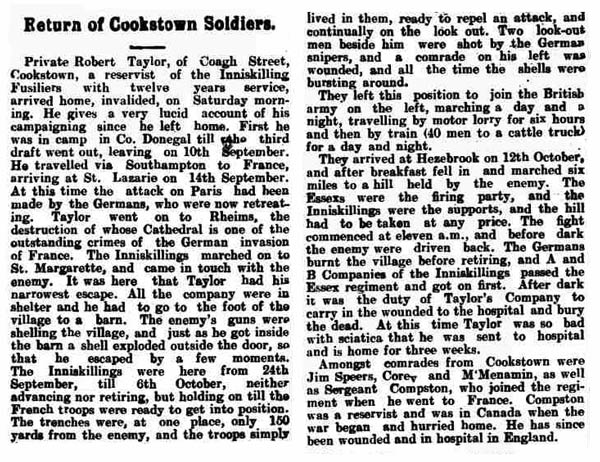 |
| 24/05/2018 |
Private Robert Taylor, of Coagh Street, Cookstown, a reservist of the Inniskilling Fusiliers with twelve years’ service, arrived home invalided on Saturday morning. He gives a very lucid account of his campaigning since he left home. First he was in camp in County Donegal till the third draft went out, leaving on 10th September. He travelled via Southampton to France, arriving at St Lazarie on 14th September. At this time the attack on Paris had been made by the Germans, who were now retreating. Taylor went on to Rheims, the destruction of whose cathedral is one of the outstanding crimes of the German invasion of France. The Inniskillings marched on to St Margarette, and came in touch with the enemy. It was here that Taylor had his narrowest escape. All the company were in shelter and he had to go to the foot of the village to a barn. The enemy’s guns were shelling the village, and just as he got inside the barn a shell exploded outside the door, so that he escaped by a few moments. The Inniskillings were here from 24th September till 6th October, neither advancing nor retiring, but holding on until the French troops were ready to get into position. The trenches were, at one place, only 150 yards from the enemy, and the troops simply lived in them, ready to repel an attack, and continually on the lookout. Two lookout men beside him were shot by the German snipers, and a comrade on his left was wounded, and all the time the shells were bursting around. They left this position to join the British army on the left, marching a day and a night, travelling by motor lorry for six hours and then by train (forty men to a cattle truck) for a day and a night. They arrived at Hazebrouck on 12th October and after breakfast fell in and marched six miles to a hill held by the enemy. The Essexs were the firing party, and the Inniskillings were the supports, and the hill had to be taken at any price. The fight commenced at 11am, and before dark the enemy was driven back. The Germans burnt the village before retiring, and A and B Companies of the Inniskillings passed the Essex regiment and got on first. After dark it was the duty of Taylor’s Company to carry in the wounded to the hospital and bury the dead. At this time Taylor was so bad with sciatica that he was sent to hospital and is home for three weeks. Amongst comrades from Cookstown were Jim Speers, Corey and McMenamin, as well as Sergeant Compston (Compton?), who joined the regiment when we went to France. Compston was a reservist and was in Canada when the war began and hurried home. He has since been wounded and is in hospital in England. |
| 24/05/2018 |
From the Mid Ulster Mail dated 31st October 1914: Return of Cookstown Soldiers |
| 30/12/2015 |
Private Patrick Corey had been seriously wounded in October 1914 and after a long term in hospital was allowed home on leave in January 1915. |
| 30/12/2015 |
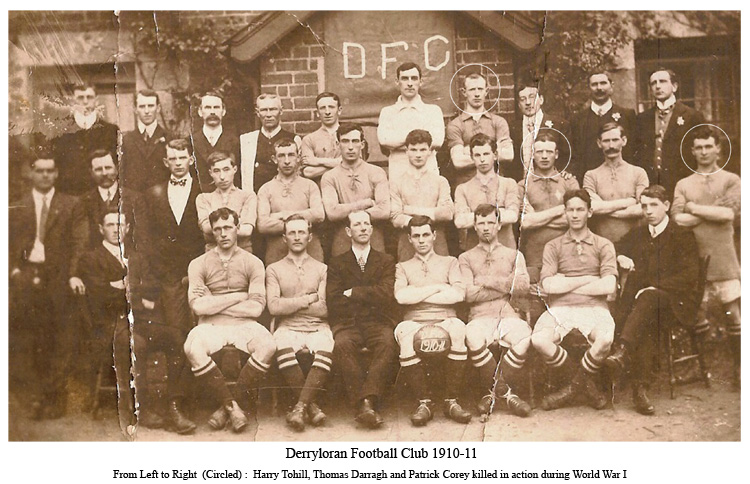 |
| 30/12/2015 |
Patrick Corey was the son of Isabella McCourt. Patrick was born in Derryloran, Cookstown about 1887. |
| 30/12/2015 |
The 1901 census lists Patrick as 15 years old living with the family at house 86 in Church Street, Cookstown. His mother seems to have remarried as her name is now McCourt. It may be assumed that Patrick’s father had died and his mother had remarried. Patrick had left school and was working as a labourer. |
| 30/12/2015 |
1901 Family: Isabella McCourt, Minnie Corey (born about 1884), Patrick Corey (born about 1886), Joe Corey (born about 1893). |
| 30/12/2015 |
The 1911 census lists Patrick as 24 years old at house 34 in Church St, Cookstown. Patrick Corey was the husband of Mary Corey who hailed from Blackhill, Cookstown. |
| 30/12/2015 |
Prior to the war he was well known and very popular in Cookstown, being a footballer of considerable ability, playing both Association and Gaelic games. |
| 30/12/2015 |
Paddy played Gaelic football with Cookstown Brian Og in 1909. Patrick was also selected to play for Tyrone in 1909 and played in an Ulster Senior Gaelic Football qualifer at Clones when Tyrone lost 1-6 to 2-4 to Fermanagh on 22nd August 1909. |
| 30/12/2015 |
Paddy Corey enlisted in Cookstown and was an army reservist and had gone out with the British Expeditionary Force at the outbreak of war and was present at the Battle of Mons. |
| 30/12/2015 |
On returning to the Colours he was stationed in Londonderry and went out with a draft of Inniskillings in May 1915. |
| 30/12/2015 |
Private Patrick Corey was serving with the 2nd Battalion of the Royal Inniskilling Fusiliers when he was killed in action on Thursday 22 July 1915. It is thought that Private Corey was killed by shellfire while billeted in the town of Bethune. He was 28 years old. |
| 30/12/2015 |
Sergeant McAtackney, who was a friend of Paddy Corey said in later years that while they were billeted in Bethune, the town came under a bombardment from the Germans. It was while the men were at rest and McAtackney was helping an illiterate soldier compose a letter home, that a shell hit the building. Sgt. McAtackney was immediately thrown into a water trough where he was sitting, and when he regained his composure he went to the building to find Paddy and others had been killed by the blast. Altogether fifteen men were killed in the explosion. |
| 30/12/2015 |
Private Paddy Corey is buried in Plot 4, Row D, Grave 22 at Bethune Town Cemetery, France. He is commemorated on Cookstown Cenotaph. |
| 30/12/2015 |
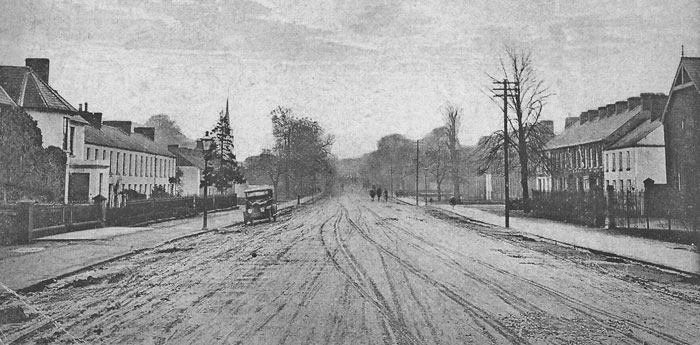 |
| 30/12/2015 |
He was a member of Cookstown Whites Football Club (1909-1910) and then Derryloran Football Club (1910-1911). |

|
|